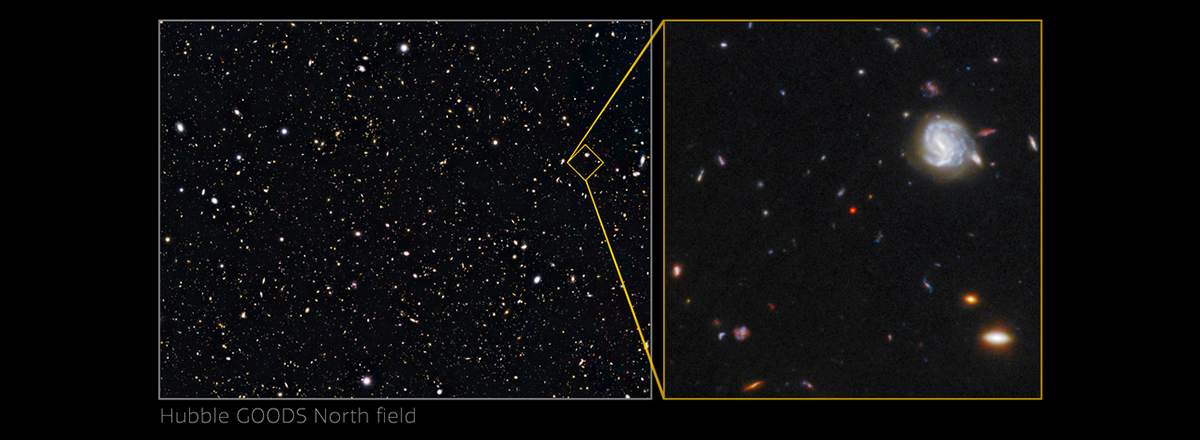Hubble Discovers a Rapidly Growing Black Hole in the Early Universe
Until now, the galaxy called GNz7q has been hiding unnoticed in one of the most studied areas of the night sky – the Great Observatories Origins Deep Survey-North (GOODS-North) field.

Astronomers have discovered a rapidly growing supermassive black hole in the early universe using the Hubble Space Telescope. It is considered an important missing link between young star-forming galaxies and the first supermassive black holes.
Until now, the galaxy called GNz7q has been hiding unnoticed in one of the most studied areas of the night sky – the Great Observatories Origins Deep Survey-North (GOODS-North) field.
Hubble archive data from the Advanced Camera for Surveys helped the team determine that GNz7q existed as early as 750 million years after the Big Bang. Thus, it is one of the oldest black holes in the universe, with a redshift of 7.6. GNz7q is also rapidly growing.
GNz7q is the first example of a rapidly growing black hole in the dusty core of a starburst galaxy during the era of star formation. It is also the earliest supermassive black hole known in the universe.

